Everything You Need to Know About Residential Solar Panel Installation
by Dan Zang on Jan 19, 2023 10:30:00 AM
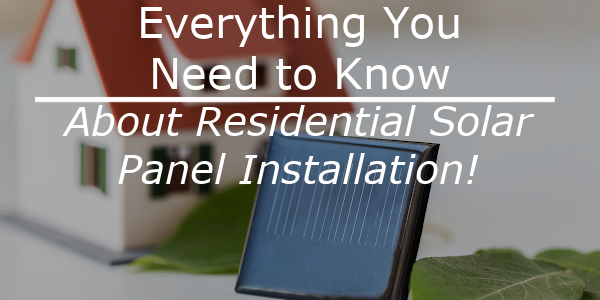
Have you noticed more and more solar panels are being installed in your neighborhood?
Wonder what the electric vehicle (EV) hype is all about?
So did we.
I’m an electrical engineer with Hallam-ICS. Our firm does not provide solar equipment or solar design services but thought my first-hand experience and engineering perspective of our solar power installation at home would be of value to my colleagues and others.
Why Did Our Family Investigate Solar
The three main reasons for looking into solar power were:
- Trying to do our small part to help the environment.
- Reduce our home electric bill.
- Probably the most important reason, is to provide a clean and inexpensive power source for charging a future EV. (Electric vehicle).
Some Technical Stuff First
For the beginners, utility power is based on, and expressed in the energy unit of kWh (Kilowatt-hour). kWh is the use of 1,000 watts over the period of one hour. A coffee maker rated at 1,000 watts operating for one hour would equal 1 kWh.
Briefly, Our Future EV
Gasoline is one of our family’s largest expenses. When comparing gasoline and electric vehicles, there are a lot of variables. Below is an example. Please keep in mind, energy costs and your individual circumstances will be different from ours.
We drive one of our non-electric vehicles roughly 15,000 miles per year and it gets 25 miles per gallon. Assuming a cost of $3.75 per gallon of gas, our yearly fuel cost for one car is about $2,250.
An EV has fuel or energy mileage expressed differently but we can still compare the cost. At the government web site https://www.fueleconomy.gov/feg/findacar.shtml, the kWh per 100 miles is listed for different vehicles. To get kWh per mile, the kWh is divided by 100. For a quick example, we will use 28 kwh for every 100 miles or 0.28 kwh per mile for our cost. The cost of power at our home is 0.18 $/kWh and using 15,000 miles per year, the cost is about $756.
Using the example above, there is roughly a $1,500 fuel cost savings per year. For us, this is a considerable savings. Having our solar equipment provide power to recharge our EV is even better.
There are government financial incentives to purchase EVs, home chargers and additional funds available for additional home electrical infrastructure if needed.
Initial Investigation
I decided to purchase our solar equipment instead of leasing. There was no upfront cost or deposit required, we were able to secure a low interest loan, take advantage of government incentives and in the end, we own the equipment.
I contacted two local solar installation firms to obtain cost estimates, gain a better understanding of the process and advantages of having solar installed at my home.
Both companies offered turnkey services that included the following:
- Coordination with the utility company for net metering and application for public good.
- Scheduling and meeting with the town building inspector.
- Installation of the solar collectors, combiners, microinverters, solar disconnect, and wiring.
- Programming of the solar monitoring equipment.
- Recommendations for financial institutions that offer favorable terms for solar installations.
- Information on available tax credits.
Both companies mentioned that we could basically replace our electrical bill with the same monthly cost of fixed rate loan for the solar installation.
The timeline for installation was approximately four months from the signing of contracts to the production of power from the solar panels.
Number One Concern - Cost
Solar is expensive, there’s no denying; but recent government incentives help reduce the cost. At the time of this writing, the federal government will provide a tax rebate of 30% for solar equipment and its installation.
There are loan incentives as well. In my case, the solar company recommended I contact a local credit union that was offering a home equity loan with, a zero down, fixed interest rate of 1.99% for 15 years specifically for solar equipment installations. (Other lending terms were also available).
Additionally, the state of Vermont did not charge the usual 6% sales tax on the solar equipment.
The estimated payback for our system is roughly 8 years with an assumed 3% inflation rate of our electrical bill per year. When including the future EV charging at home, the payback should be even sooner.
The Location Of The Solar Panels
I live on a 3/4-acre lot in a fifteen-home development, with neighbors nearby, and homeowners’ association bylaws. For our home, the best option was to install the solar panels on our roof.
I inspected our roof, and the solar installation company did as well. We found the roof to be in good condition. I was informed that if the roof required replacement, the replacement cost could be included in the solar installation loan described above.
Our town has a building inspector who also is the fire chief. Per the town ordinances, roof mounted solar panels must be installed at least three feet from roof edges and roof vents. This is mainly to allow fire fighters easier access to the roof if needed. This reduced the number of panels that can be installed on our roof.
Some More Technical Stuff
For the geeks out there, our solar installation consists of (18), 400-watt solar panels, each with a microinverter and a combination circuit combiner / power monitoring cabinet. The 7.2 kW system is designed to provide power throughout the year based on our home’s average power usage of 550 kwh per month.
Nine of the panels are located on the front roof and nine on the back roof. Our peak sun exposure is limited to a few hours when the sun is directly over our house. Due to our home’s location, and the panels being placed in the front and back of the home, we have a very long overall daily exposure of sun. In the summer, our homes sun exposure starts at 5:30am and ends at 8:30pm.
The combination combiner / monitoring cabinet provides information such as power generated, power consumed, and power returned to the grid. The power monitoring app is easy to use.
Our roof has space for four additional solar panels to be installed in the future.
Our utility company changed our existing electrical meter and installed second new meter for $110 that monitors the solar panels output. Our home’s power usage and solar production information are available from the utility company and the solar company’s web-based applications.
Other Solar Electrical Equipment
In my case, there are three additional items that were added to the side of our home near the existing utility power meter.
- A solar disconnect switch.
- An additional utility company meter that measures the output of our solar equipment.
- A combination solar circuit combiner and power monitoring equipment enclosure.
Below is a picture of the solar equipment added to the side of the house.
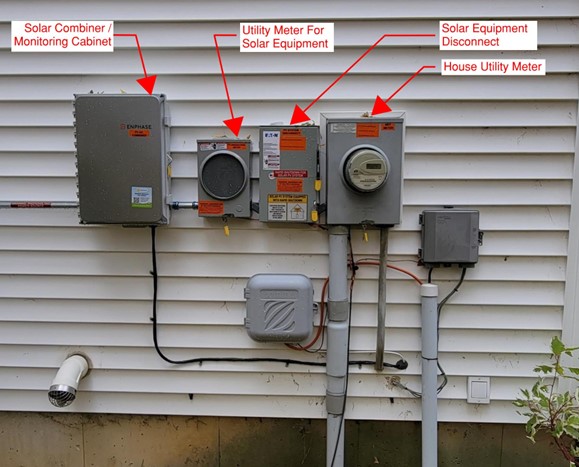
Net Metering
Net metering allows our solar installation to send power to the utility company. If our solar installation produces more power than our home requires, the excess power is sent back to the utility company, and they provide us with a credit for the power they receive. (At the time of this writing, the utility credits us $0.17/kWh and charges us $0.18/kWh for power we use.)
In my opinion, receiving the energy credit from the utility company via net metering makes the installation for solar worthwhile. Without it, I don’t think it would be a worthy investment.
Our utility company will let you use the net metering power credit for up to one year. As an example, if in July our solar panels produce 50 kWh more electricity than we use, the energy credit can automatically be applied to a different month. The energy credits generated during the sunnier summer months are applied to the less sunny months such as December or January. (Our system is oversized to ensure enough power is generated during the sunny months).
After one year, unused energy credits are not refunded, so it is best to have the solar equipment sized properly for the anticipated amount of power to be consumed.
If our solar installation over produces and solar credits are due to expire on a repeated basis, we can have the energy credits applied to another customer’s account, reducing their electrical bill.
Home Electrical Bill Cost Summary
As mentioned previously, our plan is to use our solar installation to offset our electrical bill and to provide home charging for a future EV (electric vehicle).
Our electrical bills are roughly $130 per month. (This does not include power for the future EV). Miscellaneous costs on our electric bill amount to roughly $20 per month leaving about $110 per month for actual electricity bill. Our solar 15-year loan payments is almost identical to our present-day electrical costs. Our loan payment will remain a fixed amount over time, but we will not be exposed to future utility electrical power cost increases due to inflation. Once the loan is paid off, there should not be additional electric energy costs.
As for the estimated solar equipment longevity, the panels are under warranty protection for 25 years.
Energy conservations measures that were initially overlooked
Since starting this endeavor, we’ve learned a lot about our energy usage at home. Our electric utility company has a web site with information on power usage for multiple years. It’s displayed by year, month, and even day. This information sparked our interest in what items were our energy consumers and what options we had to reduce power consumption.
Below are a few items we implemented to conserve our electrical usage.
- Our home had a large amount of “long-lasting” incandescent bulbs. I replaced all the incandescent lights with 2700K LEDs type bulbs. The replacement LEDs provide the same amount of light. Below are a few energy facts:
- A 75-watt incandescent bulb equals a 12 watt LED bulb; saving of 63 watts per bulb.
- A 40-watt incandescent bulb equals a 5 watt LED bulb saving of 35 watts per bulb.
- We have a semi-finished basement with a dehumidifier. The old dehumidifier was energy star rated back in 2005 with a min / max knob for humidity adjustment. We purchased a new, much more efficient dehumidifier with better controls that can be set to a specific humidity level. In addition, we no longer hang clothing to dry near the dehumidifier. (Clothes are dried upstairs near a heating vent). These changes alone showed significant energy savings.
- I cleaned the refrigeration coil behind the refrigerator. I’m not sure of the amount of energy saved but there was a considerable amount of dust in the area that should help in its overall performance.
- Christmas lights. Our outside Christmas lights were all incandescent and left on through the night during past holiday seasons. We replaced the lights with 2200K (warm color) LED bulb assemblies that operate with a timer to reduce operational hours. Window candle stick incandescent type lamp use 7 watts each. An equal light output LEDs use 0.6 watts.
When comparing previous years power information, an estimated 50 to 75 kWh per month of power has been saved after the energy conservation measures above. The hope is that the energy savings will help offset the power needed for the future EV home charging.
Final Thoughts and Observations
Below are things I discovered and encountered along the way.
Our homeowner’s insurance cost went up roughly $50 per year to cover the cost of the solar replacement.
The solar company’s evaluation of our site noted trees on the side of our home affecting our solar production during the winter months. This ended up having little impact due to the no leaves on the trees in the winter months.
The solar company’s six-member installation crew finished the project in less than one day. The installation crew also scheduled the town inspector on the same day. The inspector was mainly concerned with seeing the solar disconnect and labels on electrical panel inside our home. An item to remember is that an electrical panel requires three feet front clearance. I confess, I relocated a few boxes to ensure our electrical panel clearance was ok before the inspectors visit.
Some solar companies install wiring conduits across the roof. (In my opinion, it’s rather unsightly). Our installer concealed the wiring conduits out of sight in our home’s attic area.
No solar enthusiast likes seeing snow on the solar panels. We have found that most of the snow generally slides off or melts relatively quickly. This might be due to the pitch of our roof. When the snow comes off, it generally all slides off at once, with a rumble as it hits the ground.
I’ve noticed some company’s solar panels are black with a small amount of visible silver components inside. Our panels are all black and we prefer this appearance against our black shingled roof.
Our installation took place in mid-October of 2022, so we did not accrue many energy credits before entering the winter, the low solar energy production period. It would have been better if we installed our system in the spring so the excess energy produced in the sunny months could be used in the coming winter months.
The federal tax rebate / credit is returned in your yearly tax return. In our case, the federal tax return check arrives around March or April. If you generally owe taxes, your tax liability would be reduced by the amount of the solar tax credit. Our goal was to replace the monthly electrical costs with the monthly loan payment. To achieve this, the tax credit refund amount was needed to reduce the loan amount at the time the loan was signed. Due to timing, I used savings equal to the amount of the tax refund to reduce the loan amount. My savings account will be refunded once I receive my tax refund check.
Looking at the phone / computer application for solar power produced, energy usage by our home, and exported to the utility company is addicting.
In reviewing the system’s output so far and the energy conservation measures taken, we anticipate our system will produce an excess of solar power. Forfeiting the unused energy credit to the utility company is something I’d prefer to avoid. I’m hopeful the excess power produced will be able to provide charging for a future EV.
I was surprised that our utility company allowed solar power credits from one location (or customer) to be used to credit another customer at a different location. This is a great way to help donate to a worthy cause.
We are not sure how well our solar panels will perform or if we might add a heat pump or a second EV in the future. In our case, providing the solar infrastructure to add nine future solar panels was negligible. This will eliminate the removal and replacement of solar electrical equipment if needed.
Examples of Our Energy Use
Below are screen shots for our solar monitoring software.
Our installation has been in operation from mid-October of 2022 to January 1st of 2023, the date of this writing. Below are examples of sunny and cloudy days in October and December. The cloudy December day is an example of partially snow-covered panels with melting snow.
Interpreting the app information:
Blue Bar Graph: Solar power produced per hour.
Blue kWh “Produced”: Total solar power produced that day.
Orange Bar Graph: Power consumed by our home per hour.
Orange kWh within the Circle: Power consumed by our home that day.
“Net Imported / Exported”: Blue arrow, the amount of power sent back to the utility company (Power credit). Orange arrow, the amount of power used from the utility.
October Cloudy Day
October Sunny Day
December Melting Snow Covered Panels, Cloud Day
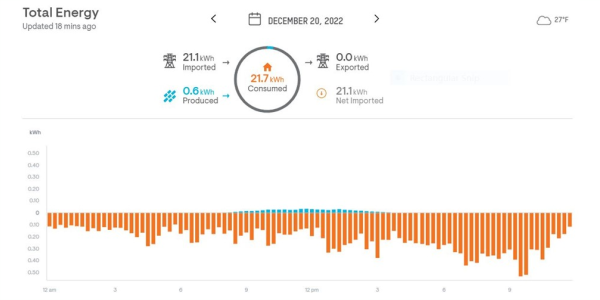
December Sunny Day
Conclusion
So far, we are happy with the solar installation and performance. We understand that looking at the system’s performance during fall and winter seasons can be discouraging, but it is performing better than we expected for this time of year. Honestly, we were excited to find any energy production during the winter.
Our solar equipment was sized to offset our electrical bill before I implemented the energy conservation measures mentioned above. After a year of operation, we will be able to determine how much power the system produces and how much additional solar would be needed for future EV home charging. Our solar installation infrastructure is sized for a few more solar panels if we need them.
We are looking forward to seeing the systems performance during the summer months!
We hope this information was valuable to you and your family. If you are interested in solar, contact a reputable solar equipment installer for a free evaluation and equipment estimate. We are glad we did.
About the Author
Dan has been at Hallam-ICS for over 25 years. He is a lead electrical engineer on projects ranging from large SEMI conductor fabs, pharmaceutical facilities, college laboratories, talc mills, data centers and luxury condominium projects.
Read My Hallam Story
About Hallam-ICS
Hallam-ICS is an engineering and automation company that designs MEP systems for facilities and plants, engineers control and automation solutions, and ensures safety and regulatory compliance through arc flash studies, commissioning, and validation. Our offices are located in Massachusetts, Connecticut, New York, Vermont and North Carolina and our projects take us world-wide.
You May Also Like
These Related Stories
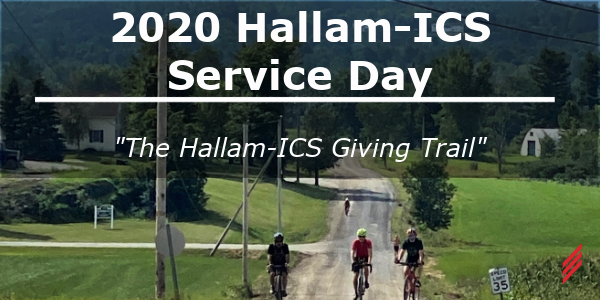
2020 Hallam-ICS Service Day - “The Hallam-ICS Giving Trail”

Client Satisfaction 2021 Feedback – Client Experience Matters!
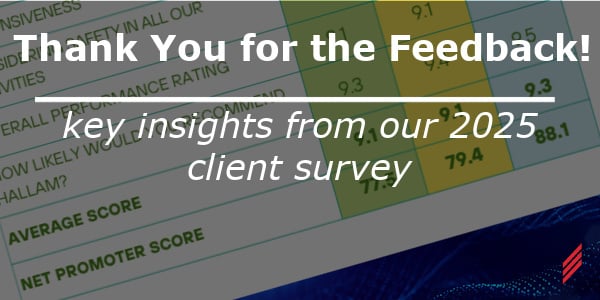

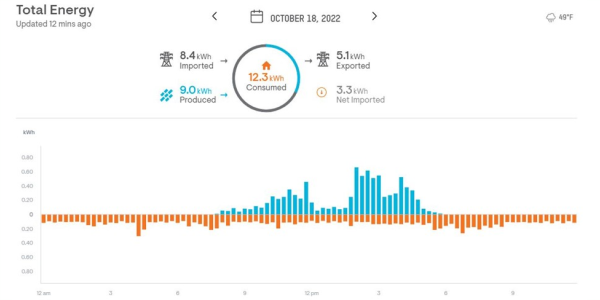
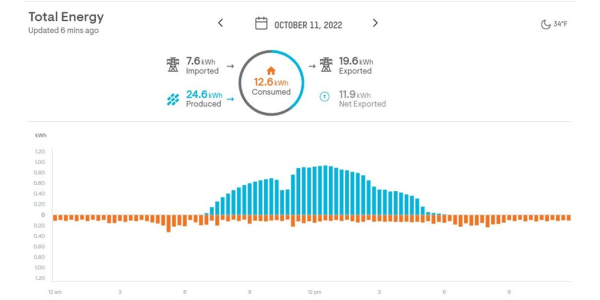
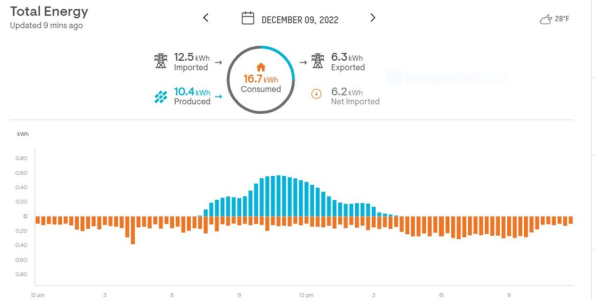

Comments (1)